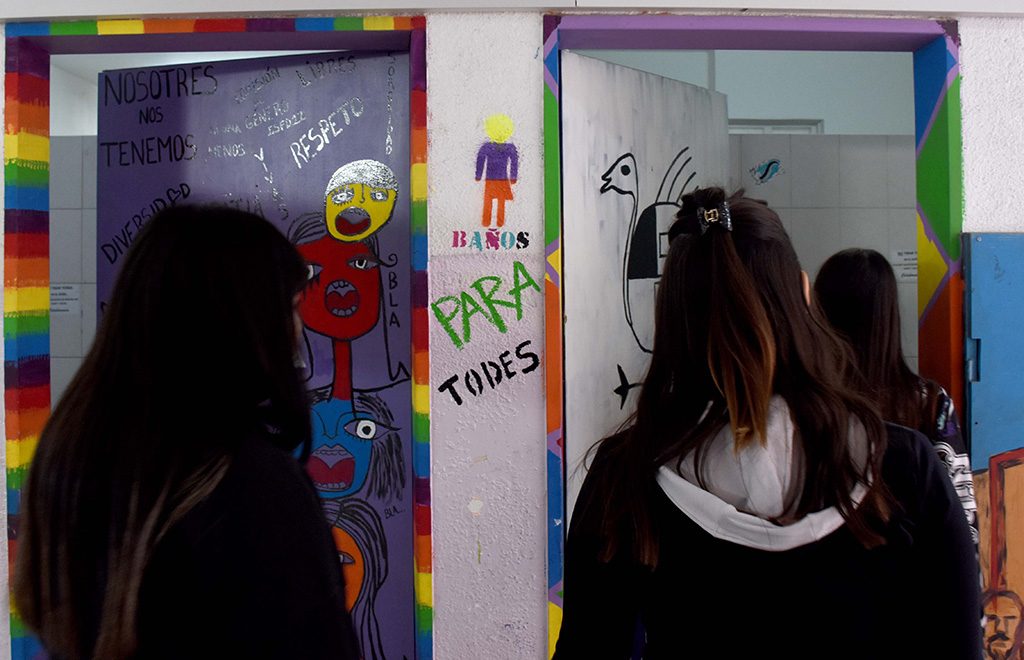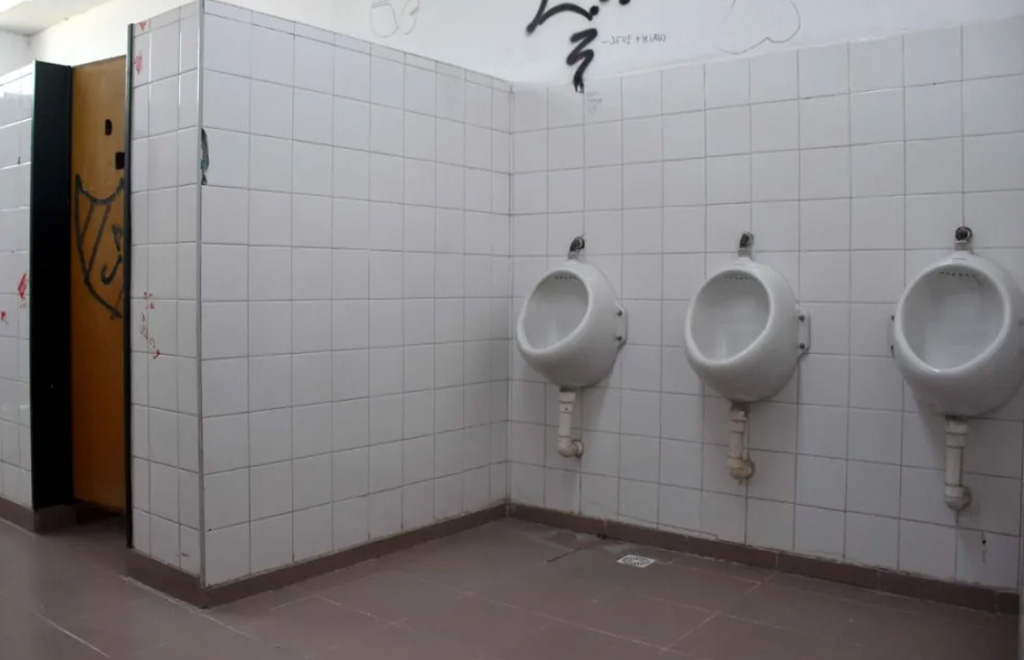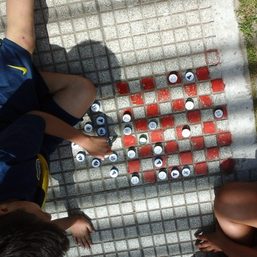SUMMARY
This is AI generated summarization, which may have errors. For context, always refer to the full article.

Were you ever afraid to go to the toilet at school? For a 14-year-old transgender teenager, it is a daily distressing situation.
“I always wait for recess to end, and step away from my classes to go to the bathroom. There’s more privacy,” Noa told me in a WhatsApp audio.
His biggest fear is that there will be a small group of boys who will see him enter the cubicle and not go to the urinals, or that they will spy on him through the door opening.
“Sometimes I’m afraid that someone will bend down and see that my feet are facing the front, facing the door and not the toilet,” he added.

Sixteen-year-old Milan’s experience is just as hostile.
“I was afraid of being beaten or raped,” he said. “Just to relieve yourself, you have to face all the possible risks, and to go to the toilet all scared. It shouldn’t be so difficult to be able to have a mixed bathroom and not be afraid of something happening to you.”
They both study in the Patagonian province of Neuquén, in southern Argentina, and we agreed to use pseudonyms to preserve them.
The distinction of toilets between male and female, or ladies and gents, not only excludes other gender identities – transgender, transvestite, non-binary – but exposes them to violence and discrimination, and may influence them into dropping out of school.
According to the survey on transgender children and adolescents carried out in the region in 2020, 14% of the families noted that the schools their children go to made some changes to address this situation. In some cases the toilets became mixed; in others, they incorporated a gender-neutral toilet. They allowed them to use the teachers’ toilet when people did not feel comfortable in any of them, or they started using the toilet of the gender they identified with.
The concept of gender-inclusive toilets is much more than just removing dividing signage. It involves thinking of toilets as safe spaces to use regardless of a person’s gender, whether they are a child, an adult, or have a disability. This is why there are not preset formulas or a single solution.
Soledad Roldán, teacher and researcher at the Faculty of Education Sciences of Comahue and the IPEHCS-CONICET-UNCo, and Lucila da Silva, postdoctoral fellow also belonging to the IPEHCS, are working in depth on the projects: “Spatialities in secondary school: corporealities, discourses and materialities in the production of school order” and “The (re)production of inequalities in Northern Patagonia. A multidimensional approach”.
In December 2018, in the faculty itself, the board of trustees approved the removal of the signage that established the distinction in the bathrooms, in the older part of the building. It was an important step, but no progress was later made towards a structural reform, and the toilets that were built in the new part of the building are now separated by gender. At that time, a multidisciplinary and intersectoral team was set up to promote the initiative, made up of activist organizations such as ATTTA, the College of Architects of Neuquén and the teachers’ union ATEN, among others.
“At the primary and secondary level, you have the strongest challenge: the building code of the city of Neuquén and the rest of the cities, which is almost a clone of the code of the Federal Capital. The code is quite explicit about this and continues to request that the bathrooms at primary, secondary, and higher education levels be distinguished, literally, by sex,” Da Silva said.
He mentioned that there are “exceptions” to the code in many aspects when it comes to the construction and execution of projects, except on this point.

She pointed out that there are at least three necessary elements: the budget to carry out the reforms if the space is already built, the regulations that enable them to be introduced, and the design, as there is no prototype of an inclusive toilet.
“If one could say which of the school spaces are negatively charged, then I would say the toilets,” Roldán added. He remarked that despite this perception among students, it is still considered a minor issue compared to other emergencies.
So far, the schools in Neuquén that have made modifications have proposed, for example, to remove the urinals or to put partitions so that they are not visible.
Use rather than service
There is a recent experience in the province of designing gender-inclusive toilets and changing rooms in non-school public works. Da Silva was involved in advising the team headed by architect Cecilia Barrera, UPEFE’s director of strategic project planning.
“We started to notice that in the design of any architectural work, they tell you about the activity that is going to be developed, a functional structure, and leave a corner for the service area where the kitchen and toilets are going to be. And the kitchen and toilets are not a service area. It starts from a conceptual issue: a service area is a storage area, because people don’t use it – that is, they enter, take something out, or put something away. A kitchen area or a toilet area is a space of use. Perhaps the issue of service space is more linked to a more generational question – that is to say, it is a form of service. And, well, we argue that this is not the case”, Barrera emphasized.
He said that the way toilets are currently designed, they breach the right to privacy, and he pointed out that the fact that many men are used to urinals does not mean that they are comfortable with them, or that they prefer them to other options. “They probably [use them] because they have always had to go to those places and be exposed,” he said.
What are the design and architectural solutions?
In Neuquén, eight projects that include gender-neutral toilets and changing rooms are underway. The works are diverse: the municipal building in Añelo, the El Cisne exhibition and convention center on Isla 132, the figure skating center in Plottier, physical activity rooms in Huinganco, Guañacos, Villa Nahueve, and Moquehue, the urban accessibility area in El Chocón, a recreational initiative in Andacollo, trade and carpentry workshops in Villa Pehuenia, and the comprehensive plan for the Ciudad Deportiva. They are being carried out by UPEFE, which is the government’s Provincial Unit for Liaison and Execution of Externally Financed Projects.
The architect Barrera, director of strategic project planning of the agency, said that there is no single model of inclusive toilet, but that in each project the socio-cultural reality of the place where it will function is analyzed, and the basic premise is to create a structure in which the privacy of the people who use the toilet is protected.

The idea is to have a sectored common integral bathroom. In the hand-washing area there are dividers which prevent the other person from seeing the other person’s washbasin. The baby changing area, which is usually located at the entrance to the women’s bathroom as if they were the only ones in charge of this task, is set back from the entrance with dividers to preserve the privacy of the child. Toilet cubicles have doors with small openings between the floor and the beginning of the panel, no more than 20 centimeters, which prevents observation from the outside. In the case of people with reduced mobility, the cubicle has a toilet and sink. If the community where the work is to be carried out uses urinals, they are placed in such a way that they are not exposed to people passing through the bathroom.
In the inclusive changing rooms there is a locker area for storing backpacks. The individual hygiene area consists of an ante-shower, where there is a bench and a clothes rack for changing, and then the shower, which is located behind a screen. This allows the person to have a space to enter, leave their towel and clothes, bathe, dry themselves, and come out dressed.

Barerra said that, in 2021, Decree 1320 established that public works in the province, regardless of the source of funding, must promote “sustainable, safe, accessible, inclusive and balanced development, with gender equity, so as to meet the needs of present generations without compromising those of future generations.” – Rappler.com
This story was originally published in Río Negro (Argentina) and is republished within the Human Journalism Network program, supported by the ICFJ, International Center for Journalists.

Add a comment
How does this make you feel?










There are no comments yet. Add your comment to start the conversation.